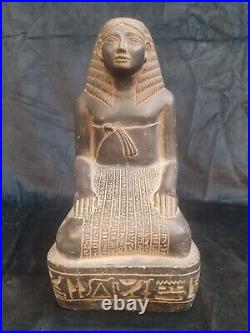

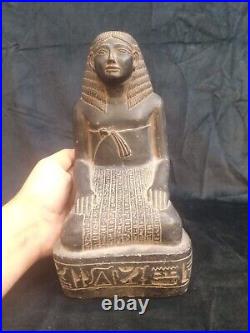

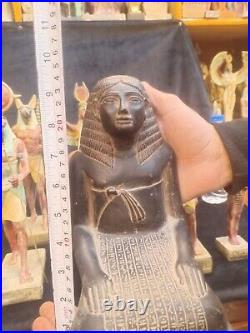
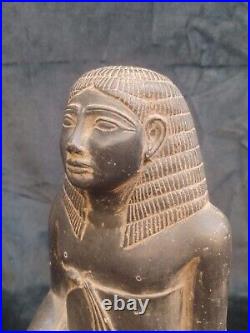
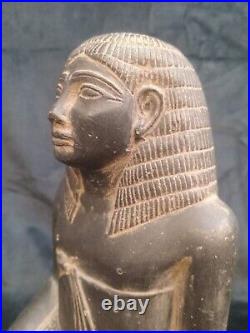
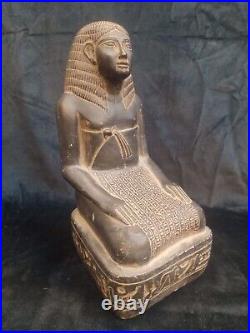
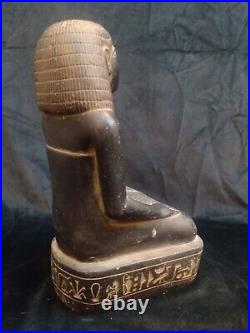
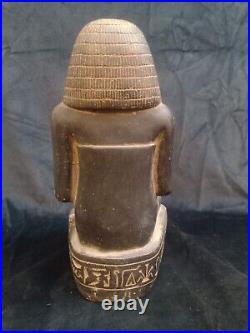

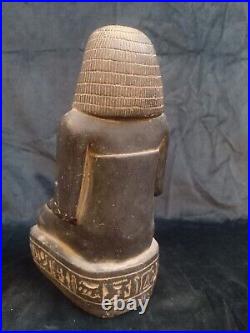
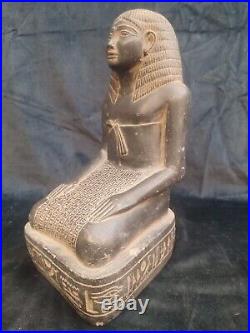
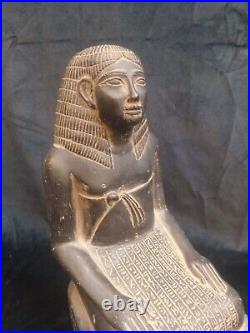
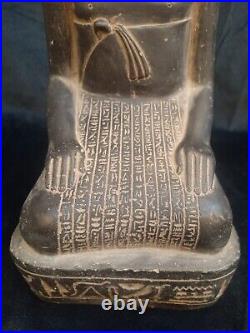

Unique statue Ancient Egyptian Antiquities Egyptian Amenhotep son of Habu BC. Amenhotep ibn Habu was a priest, engineer, and writer. He also held many official positions during the reign of King Amenhotep III. Amenhotep ibn Habu told us in the inscriptions that describe his life that he was born in the late reign of King Tuthmosis III in the town of Atreb (now Banha) to parents of the common people, Habu and his mother Eto. Amenhotep bin Habu’s first job was as assistant to the king’s clerk. Then he became clerk of recruits, where he counted, organized, and provided recruits to complete the king’s projects, whether civil or military. He held many titles that explain the jobs that Amenhotep bin Habu performed, including: supervisor of the priests, clerk of recruits, Royal Clerk, Director of all Royal Buildings, Viceroy. Amenhotep ibn Habu was also the architect of Amenhotep III, as he built and supervised many of Amenhotep III’s facilities, including the funerary temple that he built in western Thebes, in front of which there is a statue of Memnon. Amenhotep ibn Hapu also supervised their construction. Amenhotep III rewarded him for his works by allowing him to erect a statue of him in the Temple of Amun, and this statue is located in the Egyptian Museum. He also allowed him to establish a tomb for him, so Amenhotep ibn Habu established a funerary temple in Western Thebes and carved his tomb in the rocks near this temple. This is considered a great honor for him, as He equates him with the Pharaohs kings. It is believed that Amenhotep bin Habu died in the 31st year of the reign of Amenhotep III, according to inscriptions found in the tomb of Ra Musa. After his death, his fame and reputation as a teacher and sage began to increase, and with it the Egyptians’ reverence for him increased until he was raised to the rank of gods in the Ptolemaic era and became a god of healing. Please contact me and I will do everything to your. Recommend that you see the picture well and then take your decision and take your responsibility.

